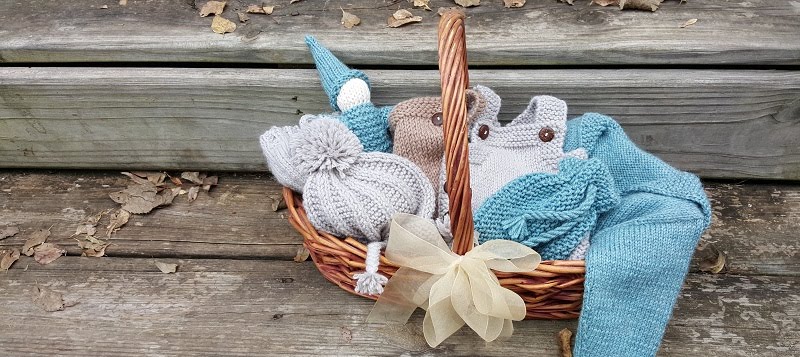Sometimes, I knit like an idiot. Sometimes, I continue to knit like an idiot for a very long time. This is very frustrating when I discover it.
See that? I cast on the same number for both sweaters. I knit the hem, and then began the color work section. This (apparently) was a lot tighter than the hem and I just continued on for inches and inches, blindly believing that it was only a little bit small and that it would easily block out to the same size. If you look at the above picture, these are obviously two different sizes. There is no amount of blocking that is going to change that.
And somehow I had to knit that far before I figured it out. And this sweater combines cables and color work so it was a slower knit than usual. But still I didn't notice until I had knit half the body.
So I unraveled it. It was painful but I discovered something interesting.
Isn't that cool? Wouldn't it make a pretty lacy sweater? It would take a long time to knit, but unraveling the base color would be very thrilling.
Anyway, I unraveled it back to the hem, knit a round increasing by 20%, and then picked up the white and started again. Once I got to the chest, I added a few extra stitches on each side for steeks and continued knitting a color work tube. I sewed the sleeves to the tube and then turned the sleeves inside out to get to the steek stitches. I crocheted double line of stitches through the steek stitches and then cut down middle, creating the armhole.
 |
| Does this picture make things any clearer? No? Sorry. |
After the armholes were cut, I knit facings for them to cover up the raw edges inside the sweater. This is partly for security (my sweater is knit of alpaca and wool and alpaca doesn't stick to itself like wool does, increasing the risk of things unraveling) and partly for aesthetics. It was a long slow knit and I wanted it to be finished nicely inside and out. If I were selling my knitting (which I'm not*), this would be a particularly high-end sweater.
I'm very happy with how it turned out. It is a beautiful little 2T sweater, and the alpaca makes it sooo soft and the color work pattern on the body makes it extra warm.
When I first started knitting it, I found the slow pace of the color work + cable stitches to be frustrating. It's not hard, particularly if you have done cables before, but it is slow. But now I really love the bold effect of the white cables against the green-blue-lavender. It makes me want to attempt a Celtic knot pattern, maybe on mittens. Wouldn't that be lovely?
*If there are any people reading this blog who value quality hand knits and would be interested in $500 children's sweaters, I would absolutely be interested in selling my knitting! But those are the kind of prices you have to charge to make it work.





